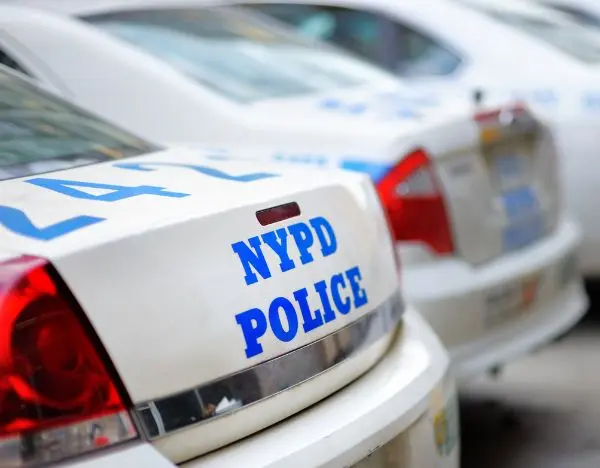New York Civil Rights & Criminal Defense Lawyers
At Sivin, Miller & Roche LLP, we have experience in defending the rights of individuals who have been victims of excessive force by law enforcement officers. If you or someone you know has suffered due to the misuse of power by police, our experienced excessive force lawyers are here to help you seek justice and compensation. Contact us today.
What Constitutes Excessive Force by Police in NYC?

In New York City, as in other parts of the United States, the use of force by police officers is governed by both legal standards and departmental policies. The concept of “excessive force” arises when law enforcement officers go beyond what is legally justified under the circumstances they face. Determining what constitutes excessive force involves assessing whether the force used was reasonable based on the situation.
Legal and Policy Framework
1. Reasonableness Standard
Under the Fourth Amendment of the U.S. Constitution, police use of force must be “reasonable.” This is evaluated from the perspective of a reasonable officer on the scene rather than with the 20/20 vision of hindsight. Factors considered include the severity of the crime, whether the suspect poses an immediate threat to the safety of officers or others, and whether the suspect is actively resisting arrest or attempting to evade arrest by flight.
2. New York Police Department Policy
The New York Police Department (NYPD) adheres to specific guidelines designed to govern the use of force by officers. These guidelines are intended to ensure that force is used judiciously, appropriately, and in a manner that respects the rights of individuals while also ensuring the safety of both the public and the police officers. Here are some key aspects of the NYPD’s use of force policy:
Key Guidelines of NYPD’s Use of Force Policy
- Necessity of Force: Officers are instructed to use force only when necessary to protect themselves or others from immediate harm, to restrain or subdue a resistant individual, or to bring an unlawful situation safely and effectively under control.
- De-escalation: Officers should use de-escalation techniques whenever possible to avoid or minimize the use of physical force. This may involve verbal persuasion, warnings, and other non-forceful resolution methods.
- Proportional Force: The level of force applied must be proportional to the threat posed by the situation. Officers should continuously assess the incident and adjust the force level in response to the subject’s actions.
- Least Amount of Force: Officers should use the least physical force necessary to achieve a legitimate law enforcement objective. This approach respects the rights and dignity of all individuals involved.
- Restrictions on Lethal Force: Lethal force is only justified under circumstances where the officer reasonably believes that such force is necessary to protect themselves or others from imminent death or serious bodily injury.
- Reporting and Accountability: Any use of force must be reported immediately to supervisory personnel. Detailed reports must include the circumstances that led to and justified the use of force and any injuries sustained by subjects or officers.
- Training: Officers receive regular training on use-of-force policies, including situational awareness, conflict de-escalation, and the legal and ethical implications of using force.
- Review and Evaluation: Use of force incidents are subject to review and evaluation to ensure compliance with policies and to identify any need for additional training or policy adjustments.
Signs A Police Officer Has Used Excessive Force on You
Recognizing signs of excessive force or police brutality can be crucial for protecting your rights and knowing when to seek legal help. Excessive force occurs when an officer uses more force than is reasonably necessary to handle a situation, often leading to unwarranted injury or harm. Here are key signs that may indicate a police officer has used excessive force on you:
Physical Evidence
- Unnecessary Physical Injury: Injuries that are disproportionate to the situation, such as broken bones, head injuries, or lacerations, especially if you were compliant or posed no clear threat.
- Use of Force after Compliance: If an officer continues to use physical force, such as striking, kicking, or using a weapon, after you have complied with their commands, it can be a sign of excessive force.
Situational Evidence
- Force Used in a Non-Threatening Situation: If you were not posing an immediate threat to the officer or others around you (e.g., you were already restrained or clearly not resisting) and force was still used, this can indicate excessive force.
- Escalation Without Cause: The situation escalated to the use of force rapidly without a reasonable cause, or the officer did not attempt to use less aggressive means first when the situation may have allowed for it.
Emotional and Psychological Signs
- Excessive Fear or Trauma: Experiencing intense fear, stress, or psychological trauma as a result of the interaction with police, especially if the response feels disproportionate to the actual threat you posed.
- Threats and Intimidation: The use of threatening language or gestures that go beyond what is necessary to control the situation could also be a sign of excessive force.
Witness Accounts
- Eyewitness Reactions: Witnesses express shock or concern at the level of force used, indicating that the force seemed excessive or inappropriate given the context.
- Video Evidence: Recordings or video footage showing that the level of force used was unnecessary or excessively violent for the situation.
Legal and Procedural Indicators
- Lack of Reporting or Evasion: If the officer fails to report the use of force, tries to block video recording, or appears to manipulate the scene (e.g., moving weapons or falsifying reports), these actions may suggest an awareness of wrongful conduct.
- Discrepancies in Police Reports: Significant discrepancies between your account, witness accounts, and what the police report can also be a red flag.
How an Excessive Force Lawyer Can Help
At Sivin, Miller & Roche LLP, we understand the gravity of cases involving excessive force by law enforcement. Such incidents can have devastating consequences on individuals and their families. If you believe you or a loved one has been a victim of excessive force, our experienced attorneys are here to help. Here’s how an excessive force lawyer from our firm can assist you:
Comprehensive Case Evaluation
- Initial Consultation: We start by listening to your story during a thorough initial consultation, where we assess the details of the incident.
- Evidence Review: Our team will meticulously review all available evidence, including police reports, witness statements, video footage, and medical records, to build a strong case.
Legal Experience and Strategy Development
- Experienced Representation: With extensive knowledge of both state and federal civil rights laws, our attorneys provide legal representation tailored to the specifics of your case.
- Strategic Litigation: We develop a strategic approach to litigation that aims to effectively counter the tactics often used by defense attorneys representing law enforcement.
Advocacy and Litigation
- Negotiation: Before proceeding to trial, we explore all avenues for a satisfactory settlement through negotiation, aiming to secure just compensation without needing a prolonged court case.
- Trial Representation: If a fair settlement cannot be achieved, our skilled litigators are prepared to represent you in court, advocating vigorously to achieve the best possible outcome.
Maximizing Your Compensation
- Damages Assessment: We help quantify the full extent of your damages, including medical expenses, lost wages, pain and suffering, and punitive damages, where applicable.
- Aggressive Pursuit of Claims: Our team works tirelessly to ensure that all potential avenues for compensation are explored and maximized.
Support and Communication
- Continuous Updates: We keep you informed throughout the process, providing regular updates and being available to answer any questions.
- Comprehensive Support: We understand the emotional toll these cases can take, so we provide compassionate support to help you and your family navigate this challenging time.
Commitment to Justice and Reform
- Policy Impact: We are dedicated to broader impacts beyond individual cases, including advocating for policy changes that prevent future incidents of excessive force.
- Community Engagement: We engage with community leaders and organizations to help foster a safer and more just environment.
Financial Compensation You May Be Entitled To
If you have been a victim of excessive force by police in New York City, you may be entitled to various forms of financial compensation. Understanding the potential damages you can recover is crucial for pursuing a civil lawsuit. Here’s an outline of the types of compensation commonly awarded in excessive force cases:
Compensatory Damages
These are intended to make the victim whole again by covering the costs directly associated with the incident. Compensatory damages can include:
- Medical Expenses: Costs for hospital stays, surgeries, medications, physical therapy, and any ongoing medical treatments related to the injuries sustained from the excessive force.
- Lost Wages: Compensation for the income lost due to inability to work following the incident. This can also include loss of future earning capacity if the injuries have a long-term impact on your ability to work.
- Pain and Suffering: This covers physical pain and emotional distress resulting from the incident. Emotional damages can include anxiety, depression, PTSD, and loss of enjoyment of life.
- Legal Fees and Costs: In some cases, plaintiffs can recover the expenses of pursuing the lawsuit.
Punitive Damages
These are awarded not as a means to compensate the victim but to punish the defendant for their misconduct and deter similar behavior. Punitive damages are considered when the actions of the police are found to be especially harmful or carried out with malicious intent.
Nominal Damages
In cases where a violation of rights is recognized, but the victim did not suffer substantial harm or financial loss, nominal damages may be awarded. These are symbolic and typically consist of a small monetary amount, but they serve as an acknowledgment that the victim’s rights were violated.
Factors Influencing the Amount of Compensation
The amount of compensation awarded in excessive force cases can vary widely based on several factors:
- Severity and Permanence of Injuries: More severe and long-lasting injuries typically result in higher compensation.
- Impact on Quality of Life: If the excessive force incident results in a permanent disability or significant changes to your lifestyle, compensation may be higher to reflect these profound impacts.
- Employment Impact: Greater compensation may be warranted if the incident affects your ability to work, either temporarily or permanently.
- Evidence of Police Misconduct: Strong evidence that clearly demonstrates misuse of force by the police can influence the amount of punitive damages awarded.
- Jurisdictional Variances: Awards can also vary depending on local laws and the specific court’s precedents regarding similar cases.
Get the Compensation You Deserve
If you’ve experienced excessive force, contact Sivin, Miller & Roche LLP now. Our dedicated excessive force attorneys will fight for the justice and compensation you deserve. Call us today for a free consultation. Let us help you take the first step towards recovery.
NYC Excessive Force Lawyer FAQs
When dealing with cases of excessive force by police in New York City, potential clients often have many questions about their rights, the legal process, and what to expect. Below are frequently asked questions addressed by the experienced excessive force lawyers at Sivin, Miller & Roche LLP:
What constitutes excessive force by a police officer?
Excessive force occurs when a law enforcement officer uses more force than is reasonably necessary under the circumstances to subdue a suspect or control a situation. This might include the use of physical force, firearms, tasers, or chemical agents like pepper spray, especially when the suspect poses no immediate threat or is already compliant.
How do I know if I have a valid excessive force claim?
A valid excessive force claim typically involves demonstrating that the police officer’s use of force was unreasonable under the circumstances. Evidence such as witness statements, medical reports, video footage, and the context of the arrest (e.g., the nature of the alleged crime and the threat posed) are critical in establishing the validity of your claim.
What should I do if I believe I am a victim of excessive force?
If you believe you have been subjected to excessive force:
- Seek medical attention immediately for any injuries.
- Document the incident as thoroughly as possible, including taking photographs of your injuries,
- gathering contact information for witnesses, and recording your detailed account of the event.
- Contact an experienced police brutality lawyer to discuss your legal options as soon as possible.
How long do I have to file an excessive force lawsuit in NYC?
The statute of limitations for filing a civil lawsuit for excessive force in New York is generally three years from the date of the incident. However, certain circumstances might alter this timeline, so consulting with a police brutality attorney promptly is crucial to ensure you do not forfeit your right to file a claim.
Will my case go to trial?
While many excessive force cases are settled out of court, whether your case goes to trial depends on various factors, including the strength of your evidence, the specific details of the case, and the willingness of the parties to reach a settlement. Our attorneys prepare every case as if it will go to trial to ensure the strongest possible preparation and positioning for negotiations.
If you have any more questions or need assistance with an excessive force claim, don’t hesitate to contact Sivin, Miller & Roche LLP for a consultation. Our dedicated personal injury attorneys are ready to advocate for your rights and seek the justice you deserve.
Tell Us About Your Case
Fields marked with an * are required
"*" indicates required fields



